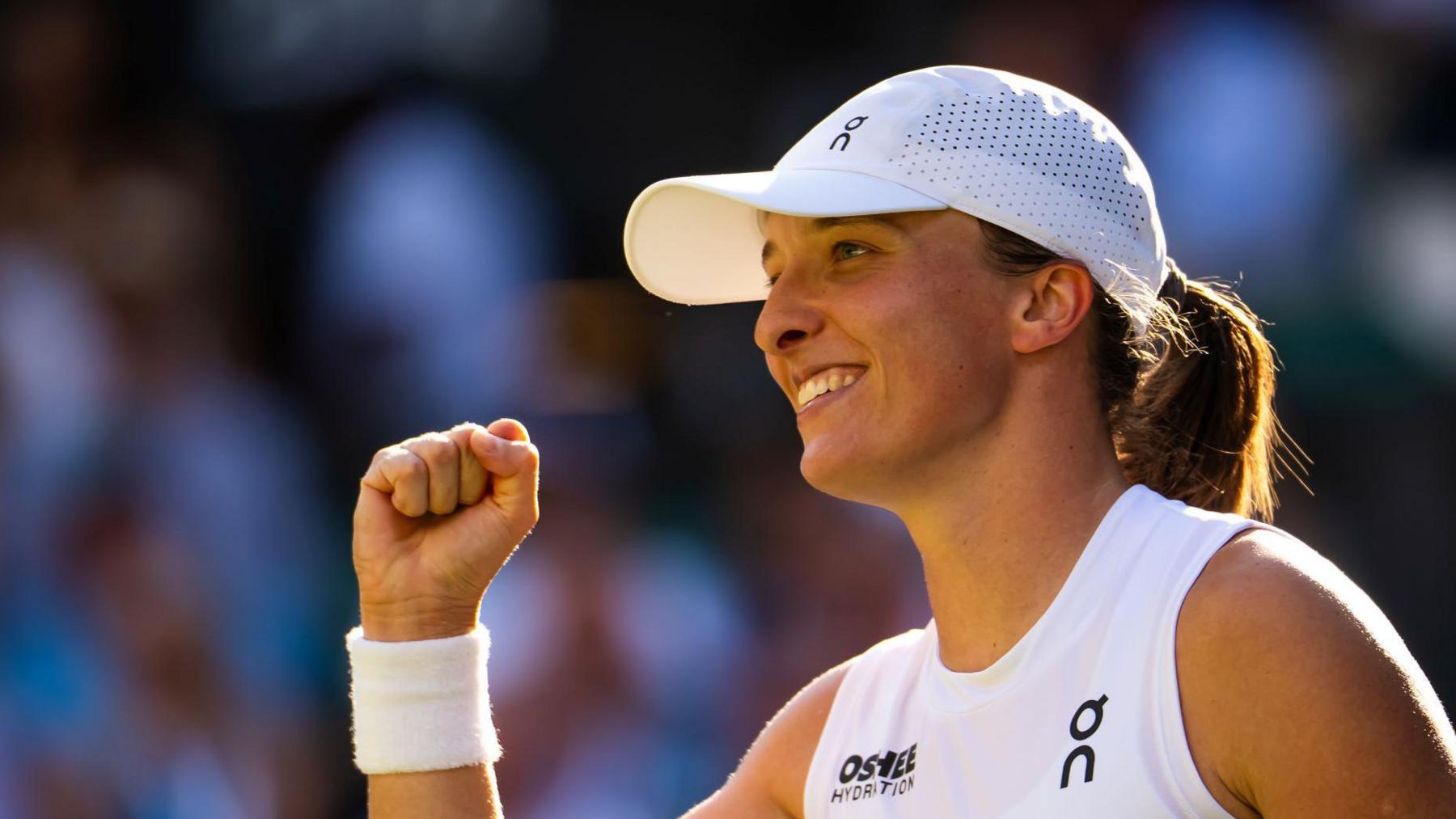Few would have predicted Iga Swiatek’s best Grand Slam result so far this season would come at Wimbledon.
Even the eighth seed is “surprised” she has reached the final.
Swiatek, 24, became known as the ‘Queen of Clay’ after winning four French Open titles in five years, while her two-year reign as the world number one – ended by Aryna Sabalenka last year – was underpinned by consistent success on the hard courts.
Grass was the outlier. But the narrative that Swiatek cannot play on the surface – despite having won a junior Wimbledon title in 2018 – has now been smashed after she reached the SW19 final.
“I’m not going to say I wouldn’t believe [I could reach the Wimbledon final] because I kind of believe and I know in tennis a lot can happen,” Swiatek said.
“But I guess I would have thought I would need to do a lot to be in this place and learn a lot.”
Finding more peace
What makes the run even more surprising is Swiatek has been nowhere near her dominant best over the past year.
She did not reach a final for a year after her 2024 French Open triumph, slipping to eighth in the world – her lowest ranking since March 2022 – as a result.
There were a mixture of reasons – on and off the court – as to why Swiatek’s level has dipped.
Losing in the Olympics semi-finals in Paris last summer was a bitter blow, with Swiatek saying she cried for “six hours” afterwards.
In November came a bigger bombshell – Swiatek had failed a doping test.
It was announced she had tested positive for heart medication trimetazidine (TMZ) in an out-of-competition sample. She was subsequently given a one-month ban after the International Tennis Integrity Agency (ITIA) accepted the result was caused by contamination.
In May, Swiatek told BBC Sport how it was difficult to “accept” having her life turned “upside down”, saying she was still looking for “a peaceful time”.
Former world number nine Andrea Petkovic, now regarded as one of the most astute current analysts, saw a “new freshness” when Swiatek played her first grass-court event at Bad Homburg.
“For most of this year you could sense pressure and tension when she stepped on court. In Bad Homburg you could see that was gone,” the German told BBC Sport.
“She is always going to be a player who is intense on court but there was just a bit more ease and seamlessness about her.
More time to prepare on grass
Before this year, Swiatek had only moved into the second week of Wimbledon once, when she reached the 2023 quarter-finals.
After a shock third-round defeat by Yulia Putintseva last year, Swiatek said she had not given herself enough time to mentally recover from her French Open win.
This year, having lost to Sabalenka in the Roland Garros semi-finals, she went to Mallorca for a week’s training on grass before returning to competitive action in Bad Homburg.
Swiatek reached the final at the WTA 500 event, where a defeat by Jessica Pegula left her in tears, but it was an indication that her level on the surface had improved.
“I feel like I have developed as a player and I had time to practise a little bit more [this year],” said Swiatek.
“I would say we mainly focused on my movement and how I should stop before hitting the ball.
Technical tweaks bedding in

Swiatek decided to switch coach at the end of last year, replacing Tomasz Wiktorowski with Wim Fissette, and it has taken time for the tweaks she was making to bed in.
Swiatek’s serve is an area which Fissette has focused on.
The Pole has won 78% of her first-serve points at Wimbledon – the joint second highest in the women’s singles.
“When you make a big change and hire a new coach, it takes a while to see the changes,” said Petkovic.
“You feel well, you feel you’re progressing and you’re expecting to see results right away. But it doesn’t happen right away.
“I think she got a bit hectic at the start of the season. Now something is different and she has a bit more patience with herself.
Warmer conditions
Swiatek’s top-spin forehand has been fundamental to her success at the French Open, but does not regularly have the same effect at Wimbledon.
The lower bounce of the usually slicker grass has previously taken away the time she likes to set up her killer shot, which bounces higher on the clay and goes out of her opponent’s strike zone.
But the warmer conditions at this Wimbledon fortnight seem to have helped her.
Agnieszka Radwanska, who reached the Wimbledon final in 2012, feels an athletic clay-courter like Swiatek could also be benefitting from the SW19 grass losing court speed.
“The grass is much slower and I feel it is getting slower and slower,” said Radwanska.
“When the temperature is over 30 degrees, the courts are not slippery and the ball stops on the grass. It is much slower and much harder to finish the point.
“You have to be more patient. You’re not winning the rally in two or three shots, it is more like four or five shots – it is a different game to before.
Related topics
- Tennis
Source: BBC

Leave a Reply